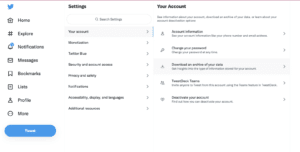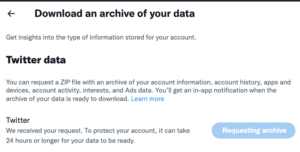In late October 2022, Elon Musk purchased Twitter for $44 billion and started transforming the company by ordering immediate layoffs, firing executives, announcing an $8 per month fee for verification, and welcoming former President Trump back to the platform (who was banned in 2021 for inciting violence).
Additionally, Musk is promising to reinstate more banned Twitter accounts, even as research shows that hate speech is rising on the platform. With the state of Twitter rapidly evolving (or devolving) since Musk’s takeover, we are working to support our clients as best we can, and answer the many questions that continue to arise.
There is certainly an ethical component for organizations to consider. It’s up to you to decide if the changes happening at Twitter align with your nonprofit’s values. This doesn’t necessarily mean you should or shouldn’t deactivate your account. This decision will depend on the importance of Twitter to your organization, as well as other specific considerations and circumstances.
One pressing issue to note, however, is that there is a sudden lack of cybersecurity leaders + community moderators, which may cause parts of the site to stop working, and potential security holes might lead to compromised accounts. As your nonprofit considers the changes happening on Twitter and explores what that means for your own presence on the platform, there are immediate actions that can be taken to protect your accounts and mitigate risks.
Below are some ways to protect your account and considerations to guide internal discussions around your nonprofit’s Twitter presence:
Protect your data
Archiving data
This article explains how you can download your Twitter archive. This data will come in the form of a ZIP file and should include your account info and history, any apps and devices you’ve used to access it, any accounts you’ve blocked or muted, all the interests and other ad data that Twitter has listed for you, and your tweet history.
Here are some screenshots from Account Settings to assist you as well. Once you request the data, please note that it can take a couple of days to be delivered to you.


Protecting your Account
Other steps we recommend taking to protect your nonprofit’s Twitter account are below:
- Ensure 2FA (two factor authentication) is set up. This can be done via email or SMS, but 2FA apps like Authy are even more secure. Here’s how to set up 2FA:
- Navigate to Settings and Support > Settings and privacy and then go to Security and account access.
- Select Security > Two-factor authentication.
- Check the box for the Authentication app or Security key and follow the on-screen directions. Make sure to also snag the backup codes and save them somewhere safe.
- Review Connected Apps and Single Sign On
- Go to your account settings and then head to Security and Account Access > Apps and sessions > Connected apps.
- If you’ve used your Twitter account to log in to another app or website, you’ll see it listed here. Open that app or log in to that website and navigate to the account settings to change it.
Consider, Review, + Delete DMs or old tweets
While Twitter doesn’t collect a ton of sensitive data, direct messages might contain information you don’t want to be made public, and details about who you’ve communicated with can still reveal private details.
Long-Term Considerations
A lot of organizations and companies are seeking guidance around whether to stay or leave the platform. However, it is important to remember that new developments are happening every day and it may still be too early to understand the full ramifications of either decision.
Twitter’s changing values mean that your organization should be prepared to assess whether it’s a tool that continues to align with your nonprofit’s values. While many organizations and individuals have pledged to leave Twitter, it is still a valuable platform on many fronts.
It retains a global audience and is an effective platform to stay aligned with the news, lean into conversations with thought leaders, develop relationships with experts, activists, and media, and conduct rapid response and crisis communication, among other things.
Impact on KPIs
We still don’t know how metrics like audience sizes and engagement rates will be affected on the platform—and it’s important to remember that some shifts could be short-term. At this moment, we advise your nonprofit to keep an eye on your own account’s key performance indicators to understand how your specific organization is being affected.
To build a long-term and sustainable strategy around Twitter, it is critical for your organization to consistently gather now and generate a deeper understanding of how the platform may be serving your needs and meeting your goals.
Download Our Free Planning Guide
In addition to these tips to protect your data, we’ve also pulled together a free planning guide to help your nonprofit map out its strategy as these changes begin. Fill out the form below to get your guide now.
Want to share your results? We’d love to hear your thoughts on the latest changes and where you see your strategy heading.
Staying Informed
We encourage you to take the information and data you gather to your leadership teams and stakeholders to make an informed decision about what is best for your organization and help build a long-term strategy around Twitter.
We are continuing to closely monitor the situation and hope that these tips to protect your account and data are a helpful first step. Our team is always available to help you discover the best social strategy for your nonprofit.
Subscribe to our email list to keep up with the latest social media and nonprofit marketing trends.
